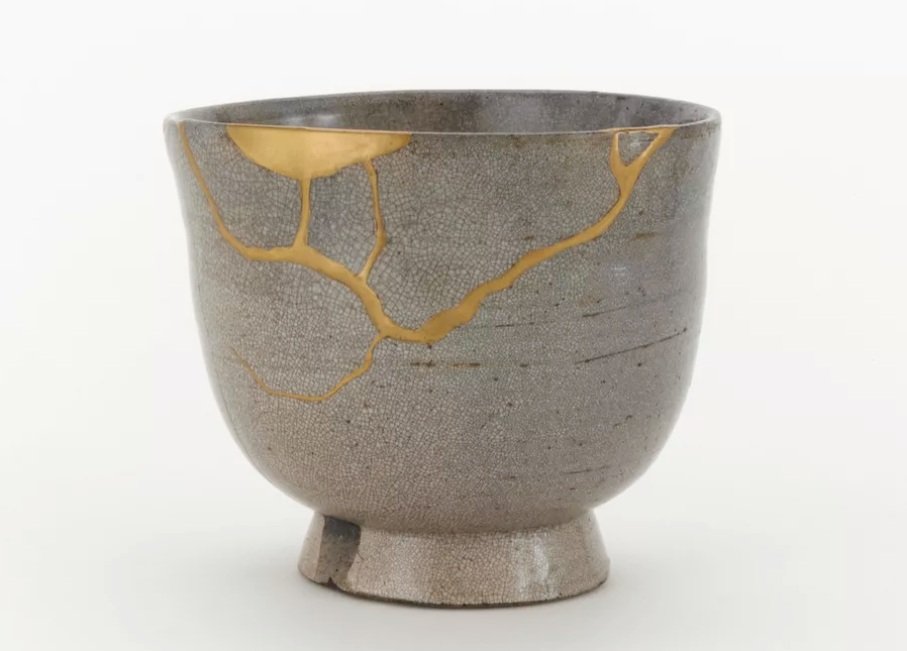Eastern Aesthetics: The Art of Imperfection
Tea bowl, White Satsuma ware, Japan, Edo period, 17th century. Sourced from National Museum of Asian Art, Smithsonian via Artsy.
This broken antique tea bowl showcases Kintsugi, which translates to “golden repair,” the art of fixing broken ceramics using lacquer dusted or mixed with precious metals. The Japanese technique not only gives the piece a unique appearance but it commemorates the beauty in flaws by precisely highlighting them. Embracing the art of imperfection is a trend that has recently surfaced in the design world. As we move toward a society obsessed with polishing and editing every component of our lives off and online, it’s refreshing to instead place value on the beauty that comes with life’s natural wear and tear.
Slab I Coffee Table, George Nakashima, Moderne Gallery
Wabi Sabi, the ancient Japanese philosophy of using organic materials with natural imperfections and embracing authenticity, originated in the 15th century. Wabi translates to living with humility and simplicity while being unified with nature, while sabi refers to accepting the lifecycle of anything, even with all its flaws. By applying the concept of Wabi Sabi to interiors, designers create tranquil spaces with a genuinely inhabited atmosphere. A George Nakashima coffee table reflects this with its free-form black walnut top. The slab exhibits a divot and two burn marks where an electric saw hit a piece of metal, probably a bullet. Rather than throw the plank away, Nakashima saved it to show the tree's story.
Custom Terrazzo Rug, Martin Young Design
Valuing the imperfect isn't solely present in Japanese culture but also appears in Italian applied arts, dating back to the 18th century. Venetian Terrazzo is a composite material comprising marble, quartz, granite, and glass shards, most commonly used for floors. Modern-day designers have begun to incorporate this mosaic material into other forms. Its asymmetrical pattern inspired designer Martin Young to create a Terrazzo woven flatweave rug for a Cow Hollow home. Young commissioned the Mitchell Denburg Collection to fabricate the carpet using skilled artisans and natural fibers. The rug's nuanced beauty echoes Wabi Sabi's principles: "Nothing lasts, nothing is finished, and nothing is perfect."



